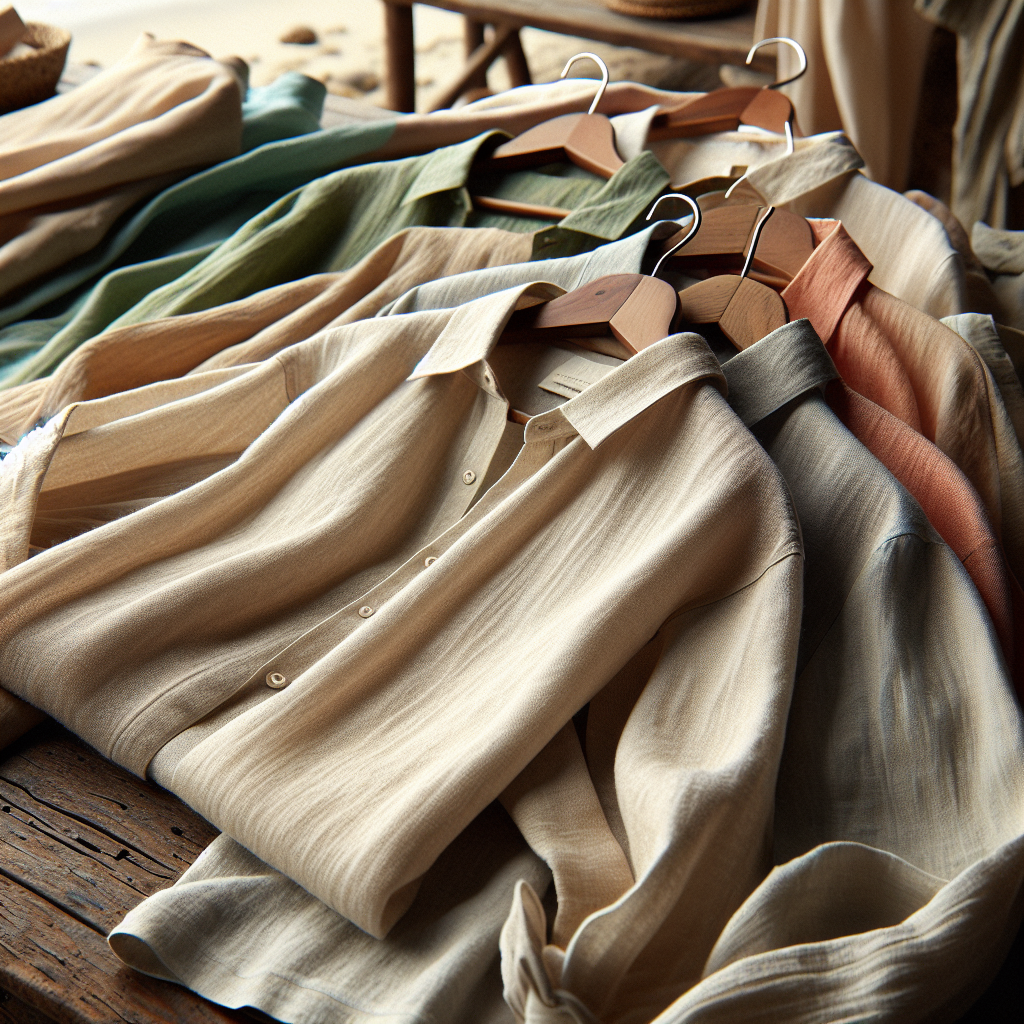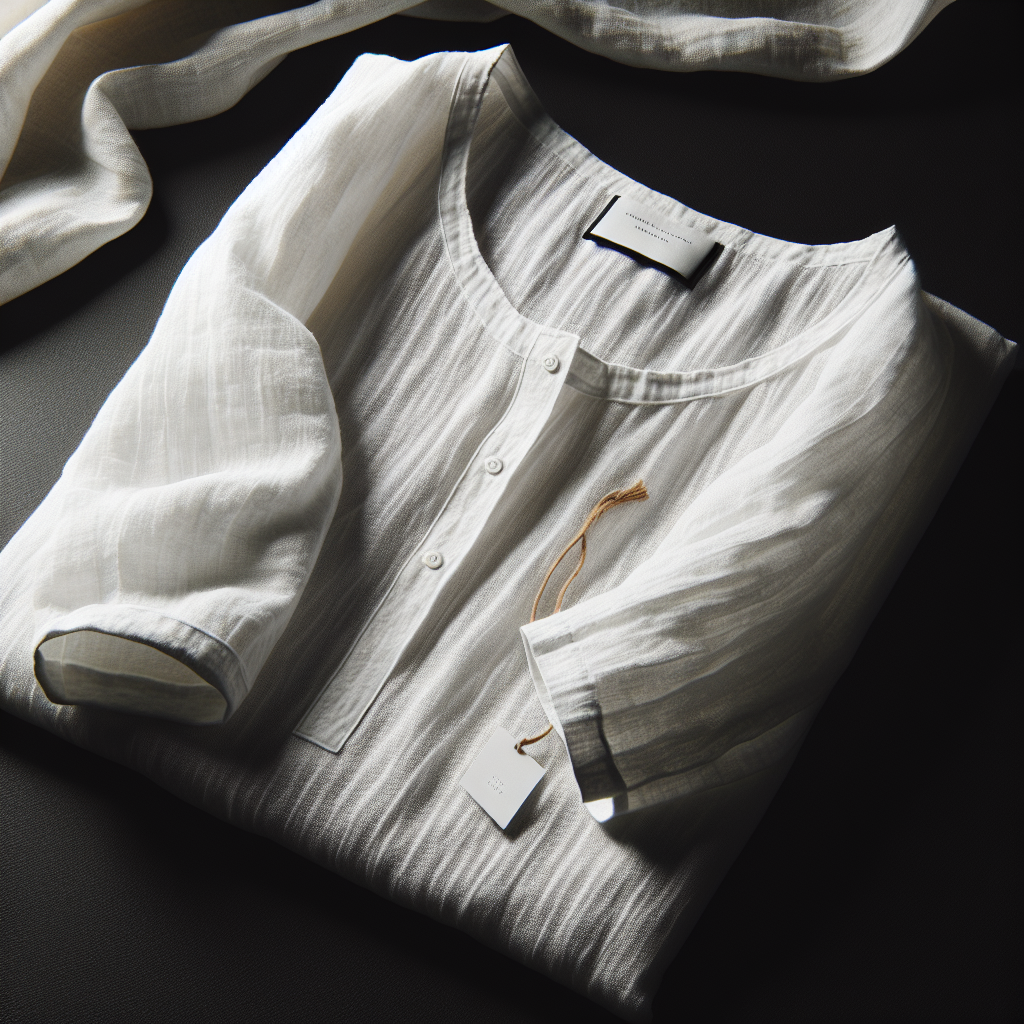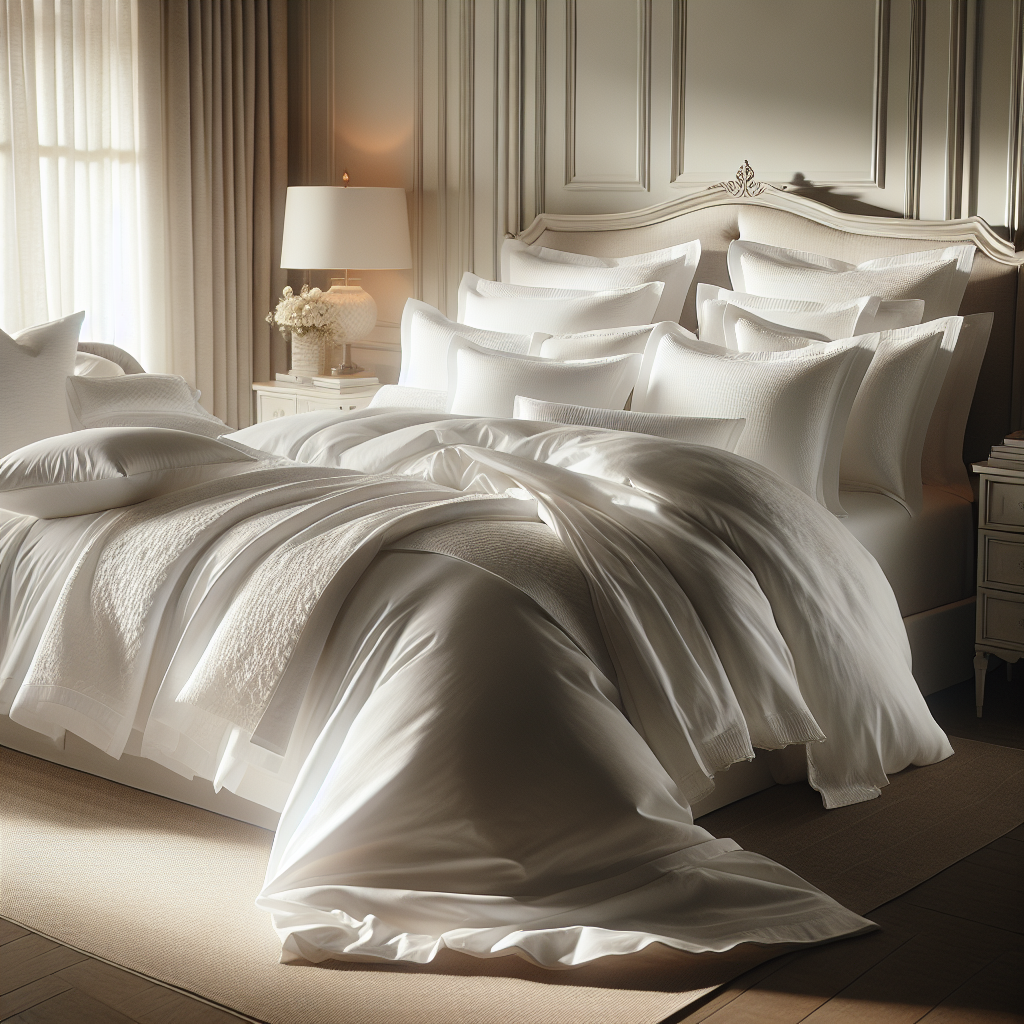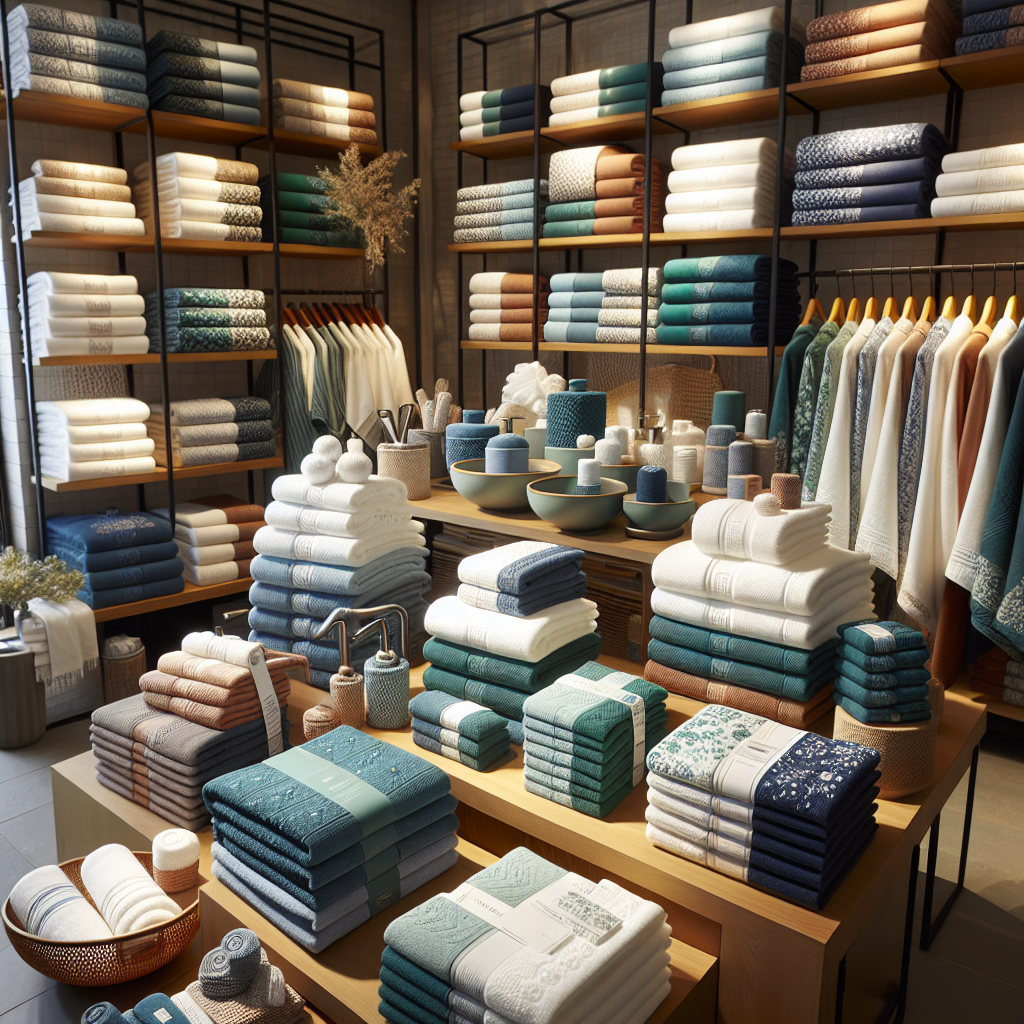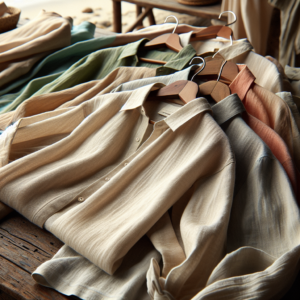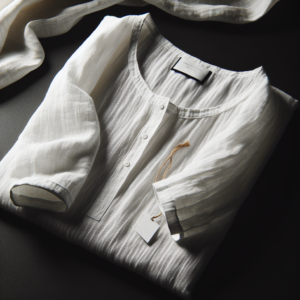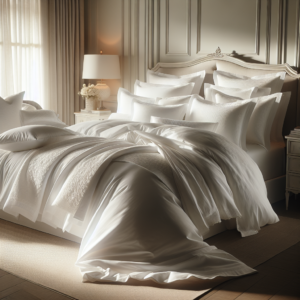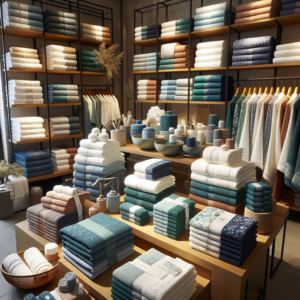The History of Linen: From Ancient Times to Modern Day Honolulu
Linen is a fabric that has been used for centuries, with its origins dating back to ancient times. It is a versatile and durable material that has been a staple in many cultures and has stood the test of time. In modern-day Honolulu, linen continues to be a popular choice for clothing, home decor, and other everyday items. But how did this fabric come to be and what is its significance in the history of Honolulu?
The history of linen can be traced back to ancient civilizations such as Egypt, Greece, and Rome. It was highly valued for its strength and durability, making it a popular choice for clothing and household items. Linen was also considered a luxury fabric, as it was labor-intensive to produce and was often reserved for the wealthy.
In ancient Egypt, linen was used to make clothing for both men and women. The Egyptians were skilled in the production of linen, and it was a significant part of their economy. The fabric was made from the flax plant, which was grown along the Nile River. The process of making linen involved harvesting the flax, soaking it in water, and then separating the fibers to be spun into thread. The thread was then woven into fabric, which was used to make garments such as tunics, robes, and headdresses.
In ancient Greece, linen was also a popular fabric, and it was used to make clothing for both men and women. The Greeks were known for their love of beauty and aesthetics, and linen was a perfect choice for their clothing. It was lightweight, breathable, and had a natural sheen that added to its appeal. Linen was also used to make sails for ships, as it was strong enough to withstand the harsh conditions at sea.
During the Roman Empire, linen continued to be a popular fabric, and its production was highly regulated. The Romans believed that linen was a symbol of purity and used it to make garments for priests and other religious figures. It was also used to make undergarments, bed sheets, and tablecloths. The Romans were also known for their advanced weaving techniques, which allowed them to create intricate patterns and designs on linen fabric.
As time passed, linen continued to be a popular fabric in Europe and eventually made its way to the Hawaiian Islands. In the 19th century, missionaries from New England brought linen to Honolulu, where it quickly became a sought-after fabric. The warm climate of Hawaii made linen a practical choice for clothing, and it was also used to make household items such as curtains, tablecloths, and bed sheets.
Today, linen remains a popular fabric in Honolulu, with many local businesses specializing in its production and sale. The warm climate and laid-back lifestyle of Hawaii make linen a perfect choice for clothing, as it is lightweight, breathable, and comfortable to wear. It is also a sustainable and eco-friendly fabric, making it a popular choice for those who are environmentally conscious.
In conclusion, the history of linen is a long and rich one, with its origins dating back to ancient times. From its use in ancient civilizations to its popularity in modern-day Honolulu, linen has stood the test of time and continues to be a beloved fabric. Its versatility, durability, and natural beauty make it a perfect choice for clothing and household items. As we look to the future, it is safe to say that linen will continue to be a staple in the fabric industry and a beloved part of Honolulu’s history.
Sustainable Linen: How Honolulu’s Linen Company is Making a Positive Impact

Linen is a versatile and durable fabric that has been used for centuries. It is made from the fibers of the flax plant and is known for its strength, breathability, and ability to keep cool in warm weather. However, the production of linen can have a negative impact on the environment if not done sustainably. That’s where Honolulu’s linen company comes in.
This company, which we will refer to as “Honolulu Linen Co.”, is dedicated to producing high-quality linen while also prioritizing sustainability. They have implemented various practices and initiatives to reduce their environmental footprint and make a positive impact on the community.
One of the ways Honolulu Linen Co. is promoting sustainability is through their sourcing of materials. They work closely with local farmers to source their flax fibers, reducing the carbon footprint of transportation. Additionally, they ensure that the flax is grown using sustainable farming practices, such as crop rotation and minimal use of pesticides. This not only benefits the environment but also supports the local economy.
Once the flax fibers are harvested, they are sent to the company’s production facility where they undergo a rigorous process to turn them into linen fabric. This process is where most of the environmental impact occurs in the production of linen. However, Honolulu Linen Co. has taken steps to minimize this impact.
They have invested in state-of-the-art machinery that uses less water and energy compared to traditional methods of linen production. They also use natural dyes and avoid harsh chemicals in the dyeing process, reducing the amount of harmful pollutants released into the environment. Furthermore, they have implemented a recycling program for any waste materials, ensuring that nothing goes to waste.
But Honolulu Linen Co. doesn’t stop at just sustainable production practices. They also prioritize ethical and fair labor practices. All of their employees are paid fair wages and work in safe and healthy conditions. This not only benefits the workers but also contributes to the overall well-being of the community.
In addition to their sustainable and ethical practices, Honolulu Linen Co. also gives back to the community through various initiatives. They have partnered with local organizations to provide job training and employment opportunities for individuals with disabilities. They also donate a portion of their profits to environmental conservation efforts in Hawaii.
One of the most impressive initiatives by Honolulu Linen Co. is their “Linen for Life” program. This program allows customers to return their old linen products to the company, which are then recycled and turned into new products. This not only reduces waste but also promotes a circular economy, where resources are reused and recycled instead of being discarded.
Moreover, Honolulu Linen Co. is committed to educating their customers about the importance of sustainability and the impact of their purchasing decisions. They provide information on their website about their sustainable practices and encourage customers to make more conscious choices when it comes to their linen purchases.
In conclusion, Honolulu Linen Co. is setting an example for other companies in the industry by prioritizing sustainability and making a positive impact on the community. From sourcing materials to production and giving back, they have implemented various initiatives to reduce their environmental footprint and promote ethical practices. As consumers, we have the power to support companies like Honolulu Linen Co. and make a difference in creating a more sustainable future.
Linen Fashion Trends in Honolulu: What’s Hot and Where to Find It
Linen has been a staple fabric in fashion for centuries, known for its lightweight and breathable qualities. In recent years, it has made a major comeback in the fashion world, and Honolulu is no exception. The warm climate and laid-back lifestyle of the Hawaiian islands make linen the perfect choice for both casual and formal wear. In this article, we will explore the latest linen fashion trends in Honolulu and where to find them.
One of the hottest trends in linen fashion in Honolulu is the use of bold and vibrant colors. While traditional linen garments were often seen in neutral tones, such as white, beige, and navy, designers are now incorporating bright and eye-catching hues into their collections. From sunny yellows to tropical greens, these colors add a playful and fun element to any outfit. Local boutiques like Mahina and Fighting Eel are known for their colorful linen pieces that capture the essence of island life.
Another trend that has taken over the linen fashion scene in Honolulu is the use of unique and intricate prints. Hawaiian-inspired prints, such as hibiscus flowers and palm trees, are a popular choice for linen garments. These prints not only add a touch of island flair but also make a statement and stand out in a crowd. Local designer Manaola Yap is known for his stunning use of prints in his linen collections, which have been featured in major fashion shows and magazines.
In addition to bold colors and prints, linen fashion in Honolulu is also embracing different silhouettes and styles. While the classic linen shirt and pants are still a go-to for many, designers are now experimenting with more modern and edgy designs. Off-the-shoulder tops, jumpsuits, and even linen dresses are becoming popular choices for both locals and tourists. These pieces not only offer a fresh take on traditional linen garments but also provide versatility and can be dressed up or down depending on the occasion.
When it comes to finding the latest linen fashion in Honolulu, there are plenty of options to choose from. Local markets, such as the Aloha Stadium Swap Meet, offer a wide selection of handmade linen pieces at affordable prices. These markets are also a great place to find unique and one-of-a-kind items that you won’t find anywhere else. For those looking for high-end designer pieces, luxury retailers like Neiman Marcus and Saks Fifth Avenue carry a variety of linen garments from top fashion houses.
For a more personalized shopping experience, many local boutiques in Honolulu specialize in linen fashion. These boutiques not only offer a curated selection of linen pieces but also provide a glimpse into the local fashion scene. Many of these boutiques also support local designers, making it a great way to support the community while adding some stylish pieces to your wardrobe.
In conclusion, linen fashion in Honolulu is all about embracing the island lifestyle while staying on-trend. From bold colors and prints to unique silhouettes and styles, there is something for everyone in this vibrant and diverse fashion scene. Whether you’re a local or a tourist, be sure to check out the various options available and add some linen pieces to your wardrobe. After all, what better way to beat the heat and look stylish at the same time than with this timeless and versatile fabric.

